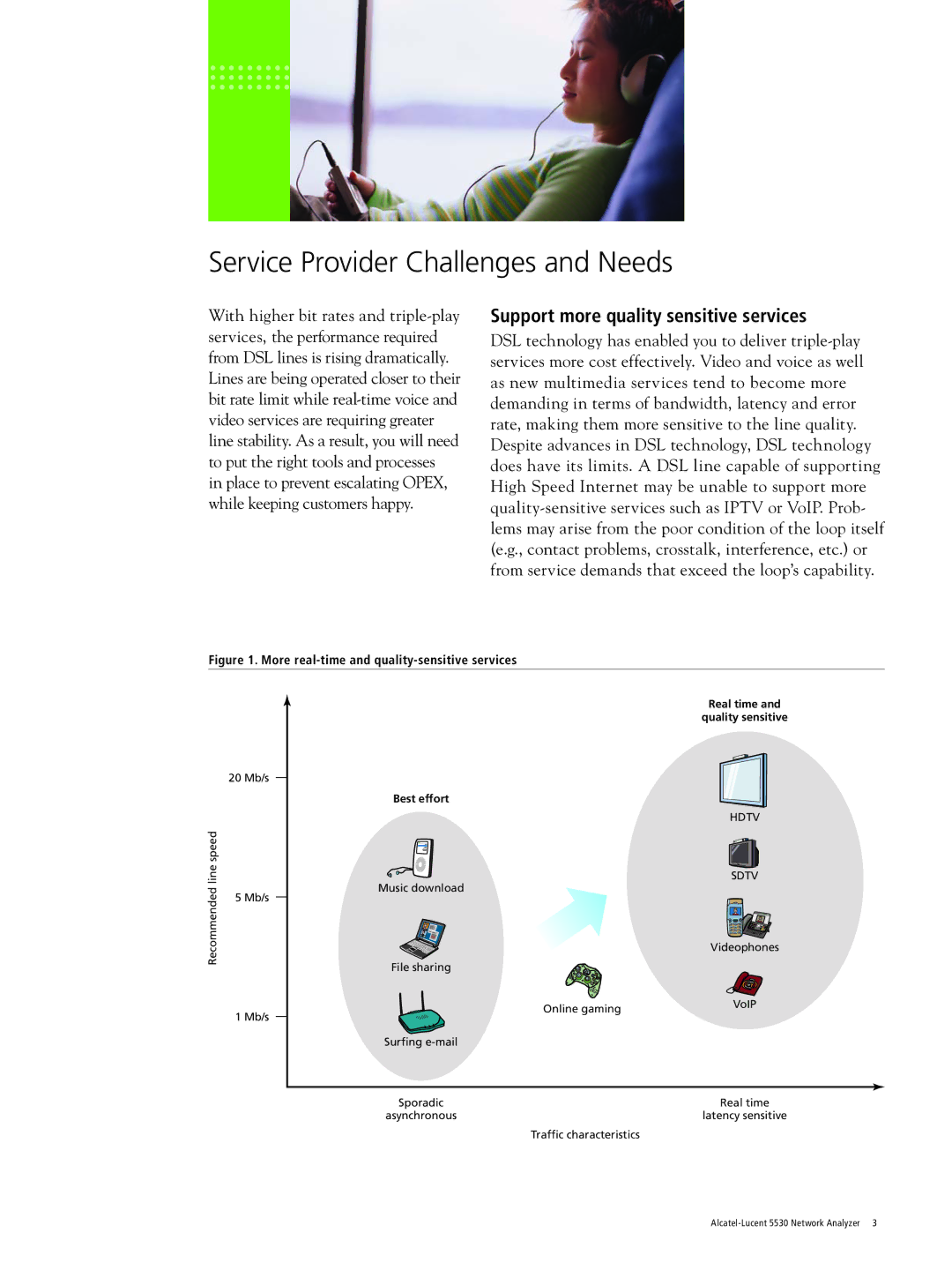Service Provider Challenges and Needs
With higher bit rates and triple-play services, the performance required from DSL lines is rising dramatically. Lines are being operated closer to their bit rate limit while real-time voice and video services are requiring greater line stability. As a result, you will need to put the right tools and processes in place to prevent escalating OPEX, while keeping customers happy.
Support more quality sensitive services
DSL technology has enabled you to deliver triple-play services more cost effectively. Video and voice as well as new multimedia services tend to become more demanding in terms of bandwidth, latency and error rate, making them more sensitive to the line quality. Despite advances in DSL technology, DSL technology does have its limits. A DSL line capable of supporting High Speed Internet may be unable to support more quality-sensitive services such as IPTV or VoIP. Prob- lems may arise from the poor condition of the loop itself (e.g., contact problems, crosstalk, interference, etc.) or from service demands that exceed the loop’s capability.
Figure 1. More real-time and quality-sensitive services
| | | Real time and |
| | | quality sensitive |
| 20 Mb/s | | |
| | Best effort | |
| | | HDTV |
speed | | | |
line | | Music download | SDTV |
Recommended | 5 Mb/s | |
| |
| | Videophones |
| File sharing | |
| | |
| 1 Mb/s | Online gaming | VoIP |
| |
| | |
| | Surfing e-mail | |
Sporadic | Real time |
asynchronous | latency sensitive |
| Traffic characteristics |
Alcatel-Lucent 5530 Network Analyzer 3

